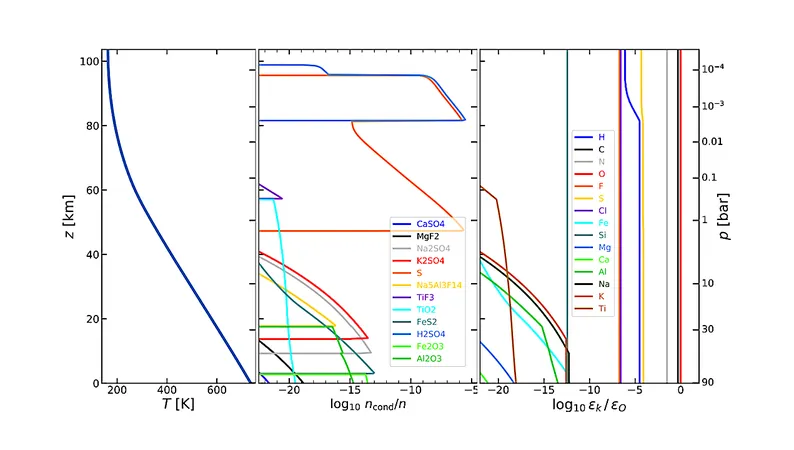
Unveiling the Secrets of Sulphate Hazes in Venus's Atmosphere!
2025-08-30
Author: Siti
Exploring Venus: A Mysterious Atmosphere Awaits!
Scientists are taking a deep dive into the enigmatic lower atmosphere of Venus, focusing on the intriguing world of sub-micrometer aerosol particles found below 50 km. What secrets do these particles hold?
The Quest for Sulphate Particles
Recent advancements in modeling techniques have unveiled that trace metal-chloride and metal-fluoride molecules exist in the Venusian atmosphere. Key players include iron dichloride (FeCl2), sodium chloride (NaCl), potassium chloride (KCl), and silicon tetrafluoride (SiF4), present in minuscule concentrations of less than 2.E-12. These discoveries signal a chemical treasure trove waiting to be explored!
The Formation of Solid Particles
Thanks to a refined DiffuDrift model, scientists have discovered that these gaseous molecules transform into solid structures like potassium sulphate (K2SO4), sodium sulphate (Na2SO4), and pyrite (FeS2) at various altitudes: 15.5 km, 9.5 km, and 2.4 km, respectively. These heights align closely with findings from the Pioneer Venus data, suggesting the presence of multiple haze layers!
High and Low: The Journey of Particles
Interestingly, particles smaller than 0.3 micrometers can ascend from the surface to the sulphuric acid cloud base through diffusion. However, larger particles, particularly those over 1 micrometer, are predominantly bound to the lower atmosphere, highlighting the complexities of Venusian environmental dynamics.
Electric Charges at Play!
The study also reveals the fascinating role of electric charges in particle behavior. Researchers found that particles at ground level carry around 100 negative charges per micron, significantly impacting their coagulation and altering their distribution. This was crucial in aligning model predictions with observed atmospheric opacity!
A Collaborative Scientific Effort
This groundbreaking study involves prominent scientists including Peter Woitke and a dedicated team, all contributing to uncovering the layered mysteries of Venus. As we continue exploring Venus's atmosphere, who knows what other secrets lie within this boiling cauldron of chemistry?



 Brasil (PT)
Brasil (PT)
 Canada (EN)
Canada (EN)
 Chile (ES)
Chile (ES)
 Česko (CS)
Česko (CS)
 대한민국 (KO)
대한민국 (KO)
 España (ES)
España (ES)
 France (FR)
France (FR)
 Hong Kong (EN)
Hong Kong (EN)
 Italia (IT)
Italia (IT)
 日本 (JA)
日本 (JA)
 Magyarország (HU)
Magyarország (HU)
 Norge (NO)
Norge (NO)
 Polska (PL)
Polska (PL)
 Schweiz (DE)
Schweiz (DE)
 Singapore (EN)
Singapore (EN)
 Sverige (SV)
Sverige (SV)
 Suomi (FI)
Suomi (FI)
 Türkiye (TR)
Türkiye (TR)
 الإمارات العربية المتحدة (AR)
الإمارات العربية المتحدة (AR)